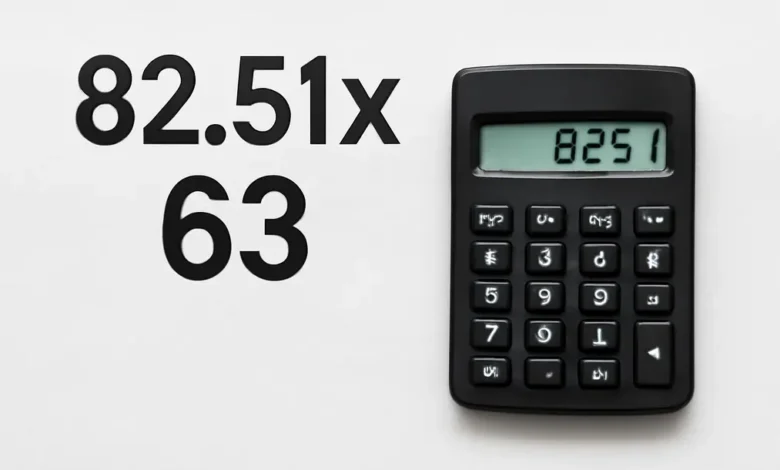The figure 82.51×63 might appear as a simple measurement, but in reality, it carries significant weight in technical, industrial, and digital contexts. Professionals across engineering, manufacturing, construction, and design rely on values like 82.51×63 to ensure accuracy and maintain standards. Understanding how 82.51×63 is applied helps avoid costly errors, ensures consistency, and supports innovation in multiple sectors.
What 82.51×63 Represents
At its core, 82.51×63 refers to a dimension or measurement often used to define width and height, or length and breadth. It can represent a physical component size, a structural dimension, or even a digital layout ratio. Such precise figures ensure clarity and leave no space for misinterpretation when creating technical documents, blueprints, or design templates.
82.51×63 in Engineering
Engineers often encounter 82.51×63 when working with mechanical components, structural beams, or machine parts. Accuracy at this level ensures systems function as intended. A misalignment or error even slightly different from 82.51×63 can cause malfunction, safety concerns, or inefficiencies. This makes the figure a critical element in design calculations and construction blueprints.
82.51×63 in Architecture and Design
Architects use 82.51×63 in scaled drawings, room layouts, and custom designs. Exact measurements guarantee balance between aesthetics and safety. For example, a window, doorway, or furniture piece built to 82.51×63 specifications fits seamlessly into the overall plan. This precision eliminates design flaws and ensures structural harmony.
82.51×63 in Manufacturing
Manufacturers rely on exact specifications like 82.51×63 for quality control and consistency. A product designed at 82.51×63 dimensions maintains uniformity across all production batches. Whether applied to sheet sizes, molds, or packaging, following 82.51×63 reduces waste and ensures compliance with standards. It is a figure that directly influences efficiency and customer satisfaction.
82.51×63 in Digital Fields
Beyond physical industries, 82.51×63 is equally relevant in digital design. Graphic designers and developers may use it as image dimensions, screen ratios, or layout guides. Maintaining the precision of 82.51×63 prevents distortion and guarantees compatibility across devices and formats. This makes it a trusted reference point for both web and print design.
Practical Applications of 82.51×63
Practical uses of 82.51×63 include:
- Carpentry, where a wood panel is cut exactly to 82.51×63 for a perfect fit.
- Printing, where paper or poster dimensions follow 82.51×63.
- Packaging, where containers designed at 82.51×63 ensure stacking and transport efficiency.
These real-world cases prove that the figure is far from abstract and plays an active role in daily operations.
Challenges in Working with 82.51×63
While precise values like 82.51×63 are essential, they also bring challenges. Specialized tools, skilled professionals, and high-quality software are required to achieve exact accuracy. Mistakes, even minor, can lead to wasted materials, added costs, and reduced reliability. Maintaining 82.51×63 consistently requires discipline and attention to detail.
Why Accuracy with 82.51×63 is Essential
Accuracy with 82.51×63 matters because industries depend on it for safety, efficiency, and trust. In construction, wrong dimensions can compromise a building’s strength. In manufacturing, miscalculations can result in defective products. In design, errors can affect visual balance. Precision with 82.51×63 ensures success across all these fields.
Future Role of 82.51×63
As industries evolve with automation, robotics, and advanced design tools, 82.51×63 will continue to be an important figure. From 3D printing to AI-driven design, precise measurements like 82.51×63 will remain the foundation of innovation. Companies that prioritize such exact values will stand out for reliability and quality.
Conclusion
The dimension 82.51×63 is far more than a number. It is a vital measurement used across engineering, architecture, manufacturing, and digital design. Precision with 82.51×63 ensures accuracy, prevents costly mistakes, and builds trust in professional outcomes. Whether on paper, in a workshop, or in digital space, 82.51×63 is a measurement that defines quality and excellence.
